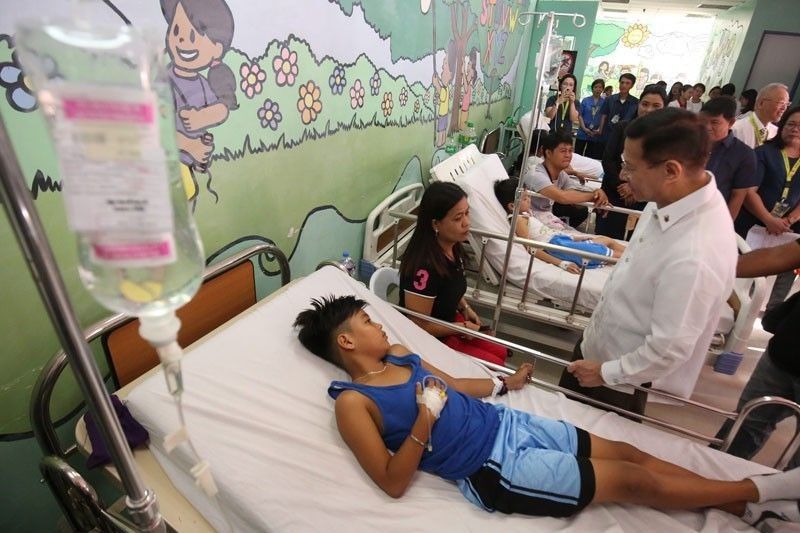DOH raises national dengue alert, urges community action

MANILA, Philippines — The Department of Health declared Monday a national dengue alert—a first for the country—due to an increasing number of cases observed in in several regions.
Health Secretary Francisco Duque III, in a televised press conference, said that the department raised the dengue alert nationwide “due to the rapidly increasing number of cases observed in several regions.”
DOH Sec. Francisco Duque III declares national dengue alert in selected areas. | via Sheila Crisostomo pic.twitter.com/fs0XEc9Nup
— The Philippine Star (@PhilippineStar) July 15, 2019
The alert is meant to make communities aware of the risk of dengue, which they can help prevent.
Duque urged the public to follow the DOH’s 4-S campaign to contain the risk of infection:
- Search and destroy mosquito-breeding sites
- Secure self-protection measures, like wearing long pants and long-sleeved shirts, and daily use of mosquito repellent
- Seek early consultation
- Support fogging/spraying only in hotspot areas where increase in cases is registered
'85-percent increase from 2018'
Duque said that from January 1 to June 29 of this year, they have recorded 106,630 cases nationwide. This put the number of cases 85% higher than what was recorded in the same period last year. The DOH said that 456 died in the said period.
“This is the first time that we’re declaring a national alert. Because the objective is very clear. We want to raise awareness among the public and more importantly, in communities where signs of early dengue increases are evident,” he added.
Duque stressed there is no national epidemic of dengue despite the department raising a national alert. “It’s localized. It can be said that [it is at most at the] regional level,” he added.
The following regions reported the most cases:
- Western Visayas – 13,164 cases
- CALABARZON – 11, 474 cases
- Central Visayas – 9,199 cases
- SOCCSKSARGEN – 9,107 cases
- Northern Mindanao – 8,739 cases
Meanwhile, the following regions are under monitoring after having exceeded the "alert threshold":
- Ilocos region
- Cagayan Valley
- CALABARZON
- Bicol
- Eastern Visayas
- Zamboanga peninsula
- Davao
- Bangsamoro Autonomous Region in Muslim Mindanao
- Cordillera Administrative Region
According to the "Manual of Procedures for the Philippine Integrated Disease Surveillance and Response," the alert threshold "refers to the level of occurrence of disease that serves as an early warning for epidemics."
"An increase in the number of cases above the threshold level should trigger an investigation, check epidemic preparedness and implement appropriate prevention
and control measures," it also says.
The Health secretary added that “Code Blue” has been raised, which means that the department recorded “clustering of more than three cases in an area within four consecutive weeks.”
“This is above the epidemic threshold as determined by the regional epidemiology surveillance unit,” he explained.
Epidemic threshold refers to the level of occurrence of disease above which an urgent response is required."
According to the PIDSR manual, "the threshold is specific to each disease and depends on the infectiousness, other determinants of transmission and local endemicity levels."
The Health chief explained that they expect dengue cases to peak every three to four years and the last peak recorded was in 2016.
He stressed: “Dengue is a viral disease with no known vaccine or specific anti-virals.” — Kristine Joy Patag with reports from The STAR/Sheila Crisostomo
- Latest
- Trending
































